|
[1]
|
World Health Organization (WHO). Coronavirus. Available from: https://www.who.int/health-topics/coronavirus (accessed on January 23, 2020).
|
|
[2]
|
Wuhan Municipal Health Commission. Available from: http://wjw.wuhan.gov.cn/front/web/showDetail/2019123108989 (accessed on December 31, 2019).
|
|
[3]
|
World Health Organization (WHO). Disease Outbreak News. Available from: https://www.who.int/csr/don/archive/disease/novelcoronavirus/en/ (accessed on January 14, 2020).
|
|
[4]
|
World Health Organization (WHO). Situation reports. Available from: http://who.maps.arcgis.com/apps/opsdashboard/index.html#/c88e37cfc43b4ed3baf977d77e4a0667 (accessed on January 23, 2020).
|
|
[5]
|
National Health Commission of the People's Republic of China. Available from: http://www.nhc.gov.cn/xcs/xxgzbd/gzbdindex.shtml (accessed on February 14, 2020).
|
|
[6]
|
Y. Zhou, Z. Ma, F. Brauer, A Discrete Epidemic Model for SARS Transmission and Control in China, Math. Comput. Model., 40 (2004), 1491-1506. doi: 10.1016/j.mcm.2005.01.007

|
|
[7]
|
G. Chowell, C. Castillo-Chavez, P. Fenimore, M. Christopher, C. Kribs-Zaleta, L. Arriola, et al., Model Parameters and Outbreak Control for SARS, Emerg. Infect. Dis., 10 (2004), 1258-1263. doi: 10.3201/eid1007.030647

|
|
[8]
|
P. Lekone, B. Finkenstädt, Statistical Inference in a Stochastic Epidemic SEIR Model with Control Intervention: Ebola as a Case Study, Biometrics, 62 (2006), 1170-1177. doi: 10.1111/j.1541-0420.2006.00609.x

|
|
[9]
|
J. Wu, K. Leung, G. Leung, Nowcasting and forecasting the potential domestic and international spread of the 2019-nCoV outbreak originating in Wuhan, China: a modelling study, Lancet (2020).
|
|
[10]
|
S. Zhao, S. Musa, Q. Lin, J. Ran, G. Yang, W. Wang, et al., Estimating the unreported number of novel coronavirus (2019-nCoV) vases in China in the first half of January 2020: a data-driven modelling analysis of the early outbreak, J. Clin. Med., 9 (2020), 388. doi: 10.3390/jcm9020388

|
|
[11]
|
B. Prasse, M. Achterberg, L. Ma, P. Mieghem, Network-Based Prediction of the 2019-nCoV Epidemic Outbreak in the Chinese Province Hubei, arXiv preprint arXiv (2002), 2002.04482.
|
|
[12]
|
C. Anastassopoulou, L. Russo, A. Tsakris, C. Siettos, Data-Based Analysis, Modelling and Forecasting of the novel Coronavirus (2019-nCoV) outbreak, medRxiv (2020).
|
|
[13]
|
Y. Yang, Q. Lu, M. Liu, Y. Wang, A. Zhang, N. Jalali, et al., Epidemiological and clinical features of the 2019 novel coronavirus outbreak in China, medRxiv (2020).
|
|
[14]
|
C. You, Y. Deng, W. Hu, J. Sun, Q. Lin, F. Zhou, et al., Estimation of the Time-Varying Reproduction Number of COVID-19 Outbreak in China, medRxiv (2020).
|
|
[15]
|
S. Hermanowicz, Forecasting the Wuhan coronavirus (2019-nCoV) epidemics using a simple (simplistic) model, medRxiv (2020).
|
|
[16]
|
K. Mizumoto, K. Kagaga, G. Chowell, Early epidemiological assessment of the transmission potential and virulence of 2019 Novel Coronavirus in Wuhan City: China, 20192020. medRxiv (2020).
|
|
[17]
|
B. Tang, X. Wang, Q. Li, N. L. Bragazzi, S. Tang, Y. Xiao, et al., Estimation of the transmission risk of the 2019-nCoV and its implication for public health interventions, J. Clin. Med., 9 (2020), 462. doi: 10.3390/jcm9020462

|
|
[18]
|
B. Tang, N. Bragazzi, Q. Li, S. Tang, Y. Xiao, J. Wu, An updated estimation of the risk of transmission of the novel coronavirus (2019-nCov), Infect. Disease Model., 5 (2020), 248-255. doi: 10.1016/j.idm.2020.02.001

|
|
[19]
|
Health Commission of Hubei Province. Available from: http://wjw.hubei.gov.cn/bmdt/ztzl/fkxxgzbdgr f yyq/ (accessed on February 15, 2020).
|
|
[20]
|
L. Bettencourt, R. Ribeiro, Real Time Bayesian Estimation of the Epidemic Potential of Emerging Infectious Diseases, PLoS One, 3 (2008), e2185. doi: 10.1371/journal.pone.0002185

|
|
[21]
|
A. Morton, B. Finkenstädt, Discrete time modelling of disease incidence time series by using Markov chain Monte Carlo methods, J. R. Stat. Soc., 54 (2005), 575-594. doi: 10.1111/j.1467-9876.2005.05366.x

|
|
[22]
|
S. Tang, Y. Xiao, Y. Yang, Y. zhou, J. Wu, Z. Ma, Community-based measures for mitigating the 2009 H1N1 pandemic in China, PLoS One, 5 (2010), e10911. doi: 10.1371/journal.pone.0010911

|
|
[23]
|
World Health Organization (WHO). Available from: https://www.who.int/news-room/detail/23-01-2020-statement-on-the-meeting-of-the-international-health-regulations-(2005)-emergency-committee-regarding-the-outbreak-of-novel-coronavirus-(2019-ncov) (accessed on January 23, 2020).
|
|
[24]
|
G. Chowell, N. Hengartner, C. Castillo-Chavez, P. Fenimore, J. Hyman, The basic reproductive number of Ebola and the effects of public health measures: the cases of Congo and Uganda, J. Theor. Biol., 229 (2004), 119-126. doi: 10.1016/j.jtbi.2004.03.006

|
|
[25]
|
C. Favier, N. Degallier, M. Rosa-Freitas, J. Boulanger, J. R. Costa Lima, J. Luitgards-Moura, et al., Early determination of the reproductive number for vector-borne diseases: the case of dengue in Brazil, Trop. Med. Int. Health., 11 (2006), 332-340. doi: 10.1111/j.1365-3156.2006.01560.x

|
|
[26]
|
C. Althaus, Estimating the Reproduction Number of Ebola Virus (EBOV) During the 2014 Outbreak in West Africa, PLoS Curr., 6 (2014).
|
|
[27]
|
G. Chowell, H. Nishiura, L. Bettencourt, Comparative estimation of the reproduction number for pandemic influenza from daily case notification data, J. R. Soc. Interface., 4 (2007), 155-166. doi: 10.1098/rsif.2006.0161

|
|
[28]
|
S. Paine, G. Mercer, P. Kelly, D. Bandaranayake, M. Baker, W. Huang, et al., Transmissibility of 2009 pandemic influenza A(H1N1) in New Zealand: effective reproduction number and influence of age, ethnicity and importations, Euro. Surveill., 15 (2010), pii = 19591.
|
|
[29]
|
S. Park, B. Bolker, D. Champredon, D. Earn, M. Li, J. Weitz, et al., Reconciling early-outbreak estimates of the basic reproductive number and its uncertainty: framework and applications to the novel coronavirus (2019-nCoV) outbreak, medRxiv (2020).
|
|
[30]
|
A. Kucharski, T. Russell, C. Diamond, Y. Liu, J. Edmunds, S. Funk, et al., Early dynamics of transmission and control of COVID-19: a mathematical modelling study, medRxiv (2020).
|
|
[31]
|
Y. Liu, A. Gayle, A. Wilder-Smith, J. Rocklöv, The reproductive number of COVID-19 is higher compared to SARS coronavirus, J. Travel. Med., (2020), 1-4.
|











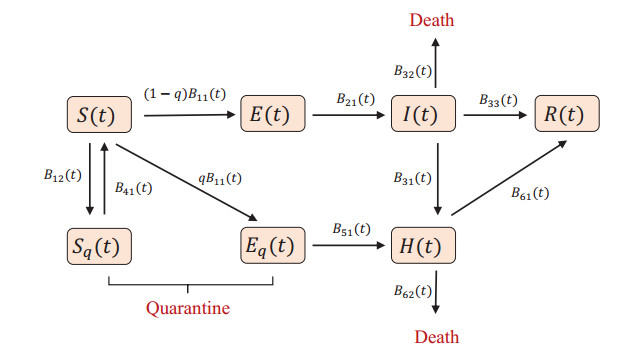
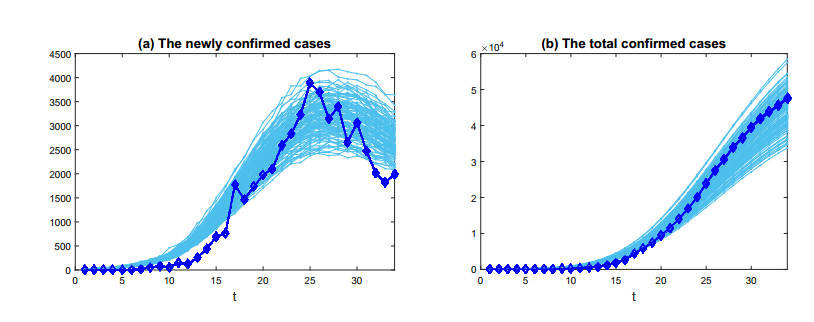
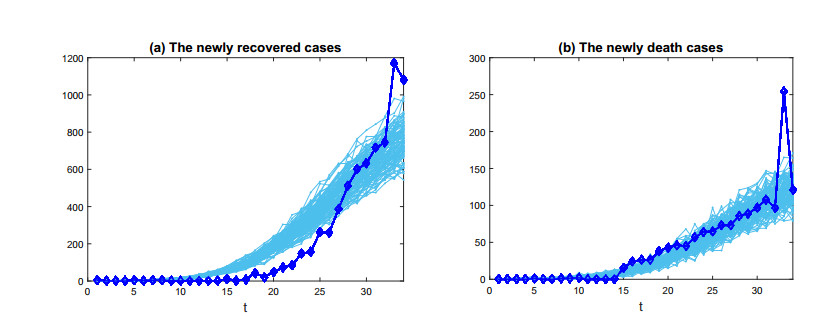

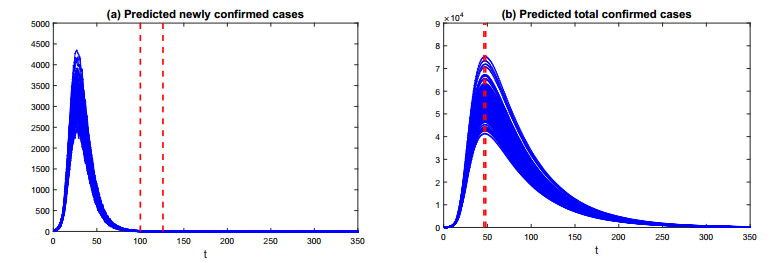
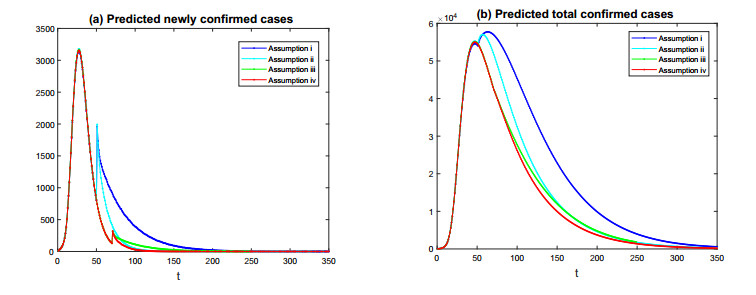


 DownLoad:
DownLoad: